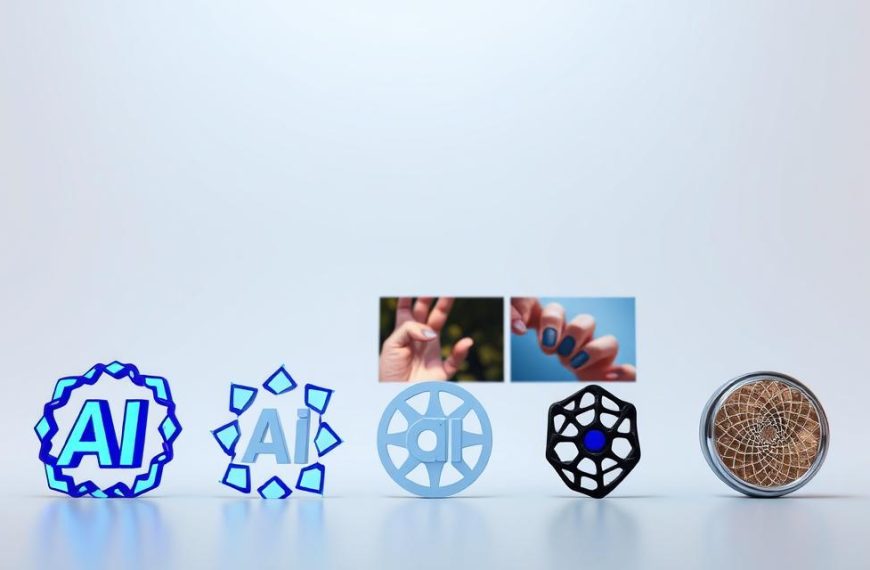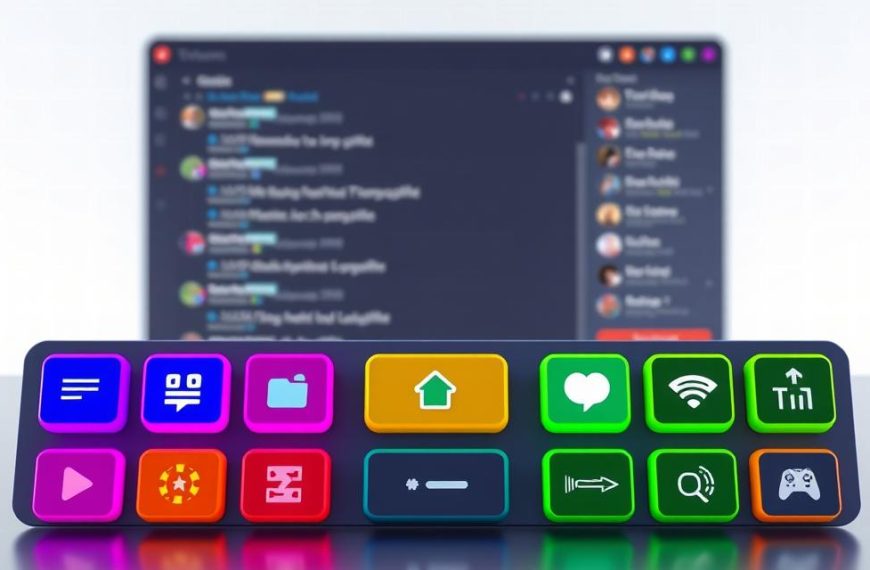Old sales methods are no longer working in today’s fast-paced world. Sales teams now face longer sales cycles and bigger buying groups. They need smarter ways to succeed.
Modern companies are using smart systems that go beyond simple personalisation. These tools study patterns and behaviour to find real opportunities with great accuracy.
The move to predictive lead scoring is a big change for businesses. It helps them focus on the right prospects without guessing.
Big deals can take many months to close. That’s why marketing automation with advanced algorithms is key. It brings the speed and precision needed for complex sales.
The Shift from Traditional to AI-Powered Lead Generation
For decades, businesses used old sales tactics that worked well enough. But today’s market is different, making these methods less effective.
Today, buyers are more careful and expect solutions that really solve their problems. They don’t just want any sales pitch.
Limitations of Conventional Lead Generation Methods
Old ways of finding leads struggle in today’s complex world. Manual methods can’t handle the data or find real opportunities.
Sales teams often spend time on leads that don’t convert. This hurts sales productivity and stretches resources too thin.
Inefficiencies in Manual Lead Scoring and Qualification
Manual lead scoring is hard for sales teams. Human evaluators might miss signs that a lead is ready to buy.
Studies show manual methods lead to:
- Inconsistent scoring
- Slow responses to hot leads
- More unqualified leads reaching sales teams
These problems hurt conversion rates and sales performance. Without AI, teams can’t focus on the best leads.
The Advent of AI in Revolutionising Lead Processes
Artificial intelligence changed the game for lead generation. Early users saw AI’s power to improve prospecting and qualification.
AI can look at lots of data quickly. It spots things humans might miss, making lead profiles and predictions better.
Early Adoption and Technological Advancements
First companies used AI for complex prospecting. These systems improved targeting and lead quality a lot.
AI got better with time. Machine learning and natural language processing helped predict buying behaviour and analyse customer communications.
This shift made lead generation proactive, not just waiting for interest. AI finds customers before they even look for products.
AI tools keep getting better and more accessible. Businesses that use them get ahead in today’s tough sales world.
Defining AI Lead Generation and Its Core Mechanisms
Artificial intelligence has changed how businesses find new customers. It turns lead generation into a smart, data-based process. AI lead generation uses intelligent systems to automate finding, qualifying, and nurturing leads. It keeps the human touch in building relationships.
These systems work alone or with sales teams. They find good opportunities and keep in touch with buyers. The tech boosts human intuition with data insights that are hard to get by hand.
Key Technologies: Machine Learning and Natural Language Processing
Two key technologies drive AI lead generation: machine learning and natural language processing. Machine learning looks at data to predict future actions with great accuracy.
Natural language processing lets systems understand and create human language. This makes customer interactions more advanced. Together, they form a strong base for managing leads.
How Algorithms Analyse and Prioritise Leads
AI systems look at lots of data to judge lead quality. They check demographics, online actions, and past conversions. This builds detailed profiles of prospects.
Then, they score leads based on how likely they are to buy. This helps sales teams focus on the best chances. It makes sure resources are used well and boosts chances of success.
Key factors in lead scoring include:
- Engagement level across digital channels
- Content consumption patterns and interests
- Demographic alignment with ideal customer profiles
- Behavioural signals indicating purchase intent
Integration with Customer Relationship Management Systems
AI lead generation shines when it works with CRM systems. Modern AI connects with CRMs like Salesforce and HubSpot. This creates a single data source that breaks down department barriers.
This integration helps marketing and sales teams work together. They have the same data, making outreach efforts more effective. The systems show the whole journey of each prospect.
Seamless Data Flow Between Marketing and Sales Teams
AI systems make sure data flows smoothly between marketing and sales CRMs. This removes the need for manual data entry. Both teams get the latest information on prospects.
This teamwork lets marketing send more targeted campaigns. Sales teams can personalise their outreach with detailed data. This team effort makes generating revenue more efficient and effective, as seen in this analysis of AI in marketing strategies.
| Data Type | Marketing Team Usage | Sales Team Usage | AI Enhancement |
|---|---|---|---|
| Engagement metrics | Campaign optimisation | Conversation starters | Automated scoring |
| Demographic data | Audience segmentation | Personalised approach | Pattern recognition |
| Behavioural signals | Content development | Timing optimisation | Predictive analytics |
| Conversion history | ROI calculation | Success replication | Trend analysis |
Advanced AI and CRM systems lead to hyper-personalisation in lead engagement. AI looks at individual behaviour and preferences. It sends content that matches each prospect’s needs and interests.
This approach boosts conversion rates and builds strong customer relationships. The tech learns from each interaction. It gets better at understanding what works for different people.
Tangible Benefits of AI-Driven Lead Generation
Companies using artificial intelligence for lead generation see real gains. These gains boost their sales and make their operations more efficient.
Increased Lead Quality and Higher Conversion Rates
AI systems are great at finding the best leads. They look at past data and how people behave to pick the right ones.
This means sales teams can focus on leads that are likely to buy. They don’t waste time on people who aren’t interested.
Real-World Examples of Improved Sales Outcomes
Guild Mortgage used AI and saw big improvements. They responded to leads twice as fast and closed deals quicker.
Another company got 40% more qualified leads with AI. Their sales team could focus on building relationships, not sorting through bad leads.
Operational Efficiency and Cost Reduction
AI agents work all the time without getting tired. They handle tasks that need a lot of human effort.
These smart systems find information, identify key people, and send emails automatically. This saves money and makes things more efficient.
Automating Repetitive Tasks for Resource Optimisation
Sales teams often do too much admin work. AI takes care of tasks like:
- Data entry and updating contact info
- Checking if leads are good
- Sending emails and setting meetings
- Reporting and analysing data
This makes things run smoother. Companies save money and get better leads.
| Metric | Traditional Methods | AI-Driven Approach | Improvement |
|---|---|---|---|
| Lead Response Time | 48 hours | 2 hours | 96% faster |
| Conversion Rate | 12% | 21% | 75% higher |
| Cost Per Acquisition | $150 | $85 | 43% reduction |
| Sales Cycle Length | 45 days | 28 days | 38% shorter |
Using AI for lead generation boosts performance. Faster sales mean more money, and less cost means more profit.
Companies that use AI smartly get ahead. They get better leads and work more efficiently. This leads to steady growth.
Implementing AI Tools: Salesforce and HubSpot Solutions
Choosing the right AI platform for lead generation is key. It’s about finding one that fits your business goals. Two leaders, Salesforce and HubSpot, offer different AI solutions.
Both platforms use AI to change how we find and engage with customers. They use machine learning to automate tasks that used to need human effort.
Salesforce Einstein: Features for Predictive Lead Scoring
Salesforce Einstein brings AI into your CRM. This makes predictive analytics easy without extra software.
It looks at past data to find the best leads. It scores leads based on who they are, how they’ve engaged, and their actions.
Customisation and Analytics Capabilities
Salesforce Einstein lets you tailor scoring to your business. You can adjust models to fit your sales process and customer type.
The analytics dashboard shows trends in lead quality. This helps sales teams see how their strategies work.
It also enriches lead data with external info. This makes profiles more detailed for better scoring.
HubSpot’s AI Tools for Marketing Automation
HubSpot uses AI in its marketing platform. It focuses on finding valuable leads by their engagement across channels.
The AI looks at how prospects interact with your content and emails. It ranks leads based on their interest and fit with your ideal customer.
Lead Tracking and Behaviour Analysis Functions
HubSpot tracks every interaction with your brand. This includes website visits, content downloads, and email opens.
It uses this data to create detailed profiles for each lead. This helps marketing teams see what content works best for different groups.
For effective multi-channel engagement, HubSpot’s AI coordinates messages across channels. This keeps communication consistent and moves leads through the sales funnel.
Both platforms are big steps forward in lead generation. For more on AI lead generation, check out this guide.
| Feature | Salesforce Einstein | HubSpot AI |
|---|---|---|
| Primary Focus | Predictive lead scoring | Marketing automation |
| Data Enrichment | Integrated external sources | Behaviour-based scoring |
| Customisation Level | Highly customisable models | Pre-configured with adjustments |
| Multi-channel Support | Comprehensive CRM integration | Native marketing channel coordination |
| Implementation Complexity | Requires technical configuration | Quick setup with guided onboarding |
Choosing between these platforms depends on your current setup and needs. Both offer strong AI tools to boost lead generation.
Strategies for Maximising AI in Sales and Marketing Campaigns
Using AI smartly changes how companies get leads. It’s not just about automating tasks. It’s about using AI’s power to stay ahead and offer custom experiences to many.
Personalising Customer Interactions with AI Insights
AI looks at lots of data to connect with customers. It checks past actions, trends, and what people want right now. This helps make messages that really speak to each person.
AI agents change how we talk to possible customers. They send messages that fit each person’s needs, through email, LinkedIn, and phone calls. This makes sure messages are always on point.
Dynamic Content Creation Based on Lead Behaviour
AI changes content based on what leads do and like. This keeps messages right for each step of the customer journey. Changes happen fast, based on how people interact.
Changing content based on behaviour boosts engagement. Marketing materials adjust to what people do. This makes communication feel truly personal and effective.
| Personalisation Approach | Implementation Method | Key Benefits | Best Use Cases |
|---|---|---|---|
| Behaviour-Based Content | Real-time engagement tracking | Higher conversion rates | Email marketing campaigns |
| Channel-Specific Messaging | Cross-platform AI coordination | Consistent brand experience | Multi-channel outreach |
| Intent-Driven Communication | Real-time signal analysis | Improved prospect qualification | Sales follow-up sequences |
| Industry-Tailored Content | Sector-specific data analysis | Enhanced relevance | B2B marketing initiatives |
Future-Proofing with Predictive Analytics and Trend Analysis
Predictive analytics help businesses see what’s coming. They look at past and current data to guess future trends. This lets companies plan ahead, not just react.
Advanced prospect qualification is made possible by predictive models. AI spots which leads are most likely to convert. This helps sales teams focus on the best opportunities.
Forecasting Market Shifts and Adapting Strategies
Trend analysis helps businesses stay ahead. AI finds new patterns that show where the market might go. Companies can then adjust their plans to stay competitive.
Forecasting gives insights for planning. It’s not just about past results. It helps predict the future. This gives a big edge in fast-changing markets.
Good companies use these predictions to improve their targeting. Marketing gets better as efforts go to the most promising places. This is the top of AI marketing success.
Conclusion
AI has changed how businesses find and grow with customers. It helps companies spot the right leads quickly. This is key in today’s complex sales world with many people involved.
AI tools are now better at predicting sales. They look at buying signals from different places. This lets sales teams focus on the best chances to make sales.
Smart companies are using AI to do more than just automate tasks. They have AI agents that do research and pass on deals. These agents keep customer interactions personal and on a large scale.
As AI gets better, we’ll see even more accurate predictions and ways to reach customers. Businesses should get ready by using platforms like Salesforce and HubSpot. These tools have strong AI features.
AI is not meant to replace human skills but to boost them. It helps make better decisions and build stronger customer ties. This gives companies a big edge in the digital world.

















